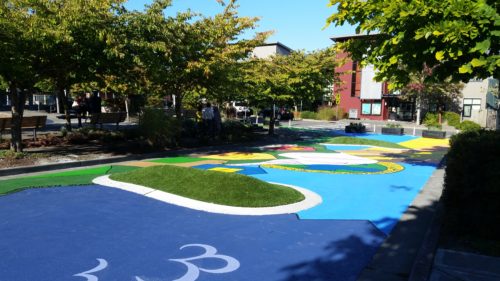5.1 Adaptive Design

Adaptive design strategies (ADS) are temporary right-of-way improvements that provide quick, low-cost solutions for reallocating street space to address an opportunity or to mitigate an existing concern. Use of adaptive design strategies has one overarching aim: to reconfigure space within the public right-of-way to respond to the needs of a continuously evolving community of users. Adaptive design strategies can take on a variety of functions including experimentation, piloting new improvements, addressing safety issues, and increasing public space. Above all, adaptive measures are meant to provide responsiveness and flexibility. Permanent right-of-way improvement can take years, as well as significant resources, to implement. Adaptive design strategies allow the City to address issues in the near term, providing practical amenities or safety improvements where they are needed most until permanent or larger scale improvements can be constructed. By definition, adaptive design strategies should be relatively quick and cost effective, with little to no impact on material integrity or utilities where sited.
The duration of an adaptive measure varies depending on its location, function, and the resources available to maintain or replace it. An adaptive measure could be installed for hours, days, seasons, or years depending on the context. As a general rule, however, no adaptive design strategy should last more than five years without a permanent solution.
Regardless of the duration, monitoring and evaluating the performance of adaptive treatments is essential to understanding their performance, effectiveness, and the decision on whether to return a street to its previous condition or to construct permanent improvements. By evaluating usage of an adaptive treatment, City crews can quickly change its configuration or alter plans for permanent infrastructure to more effectively suit the needs of all people.
Color selection for the pavement treatment should follow SDOT’s guide to Seattle’s street colors.
